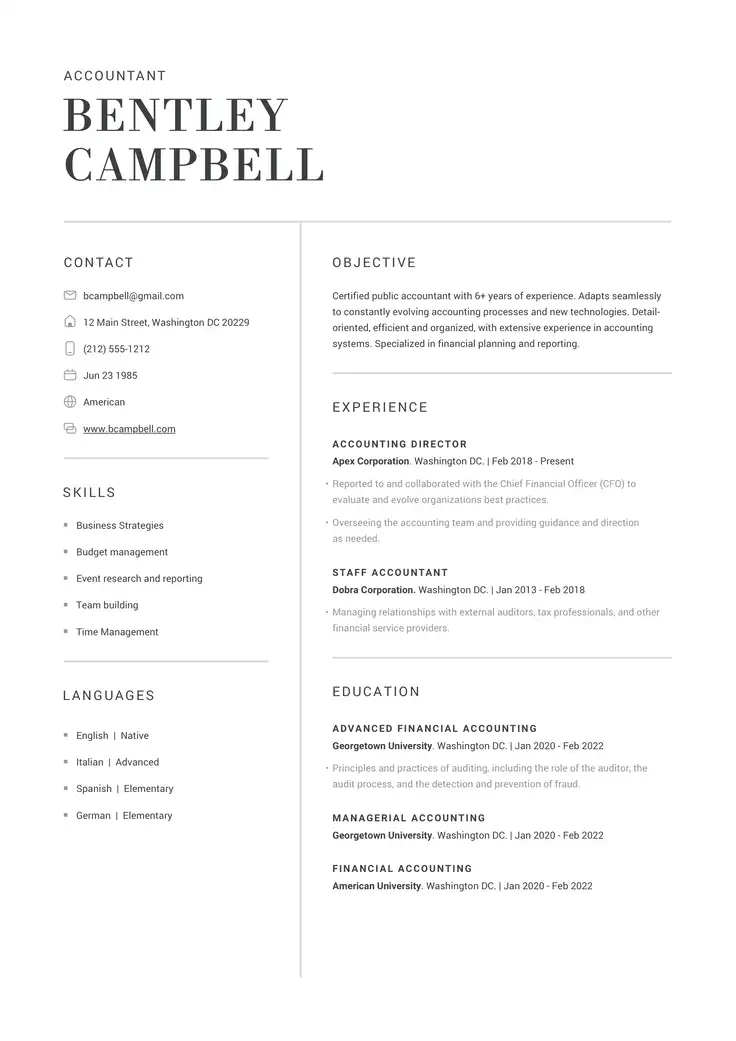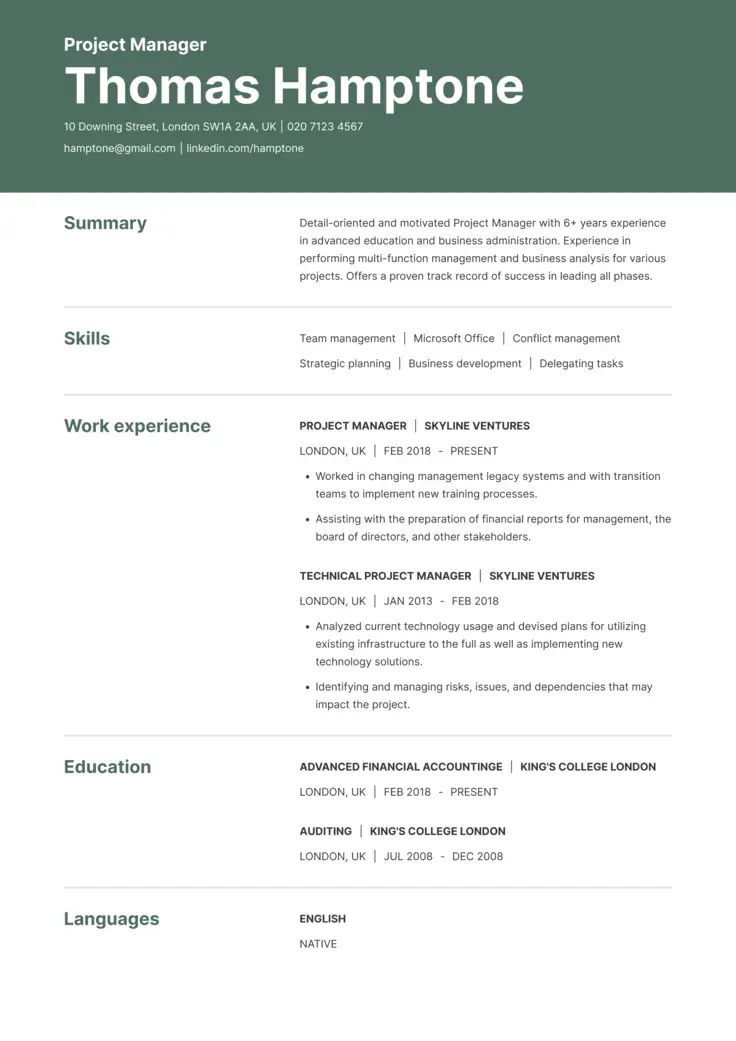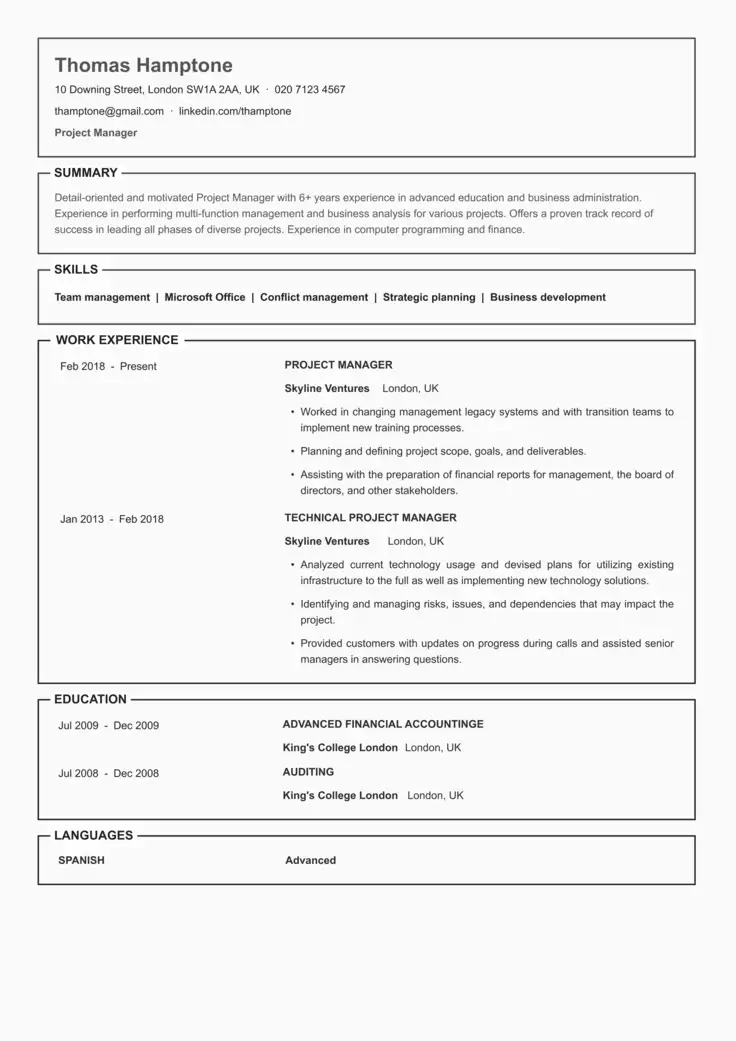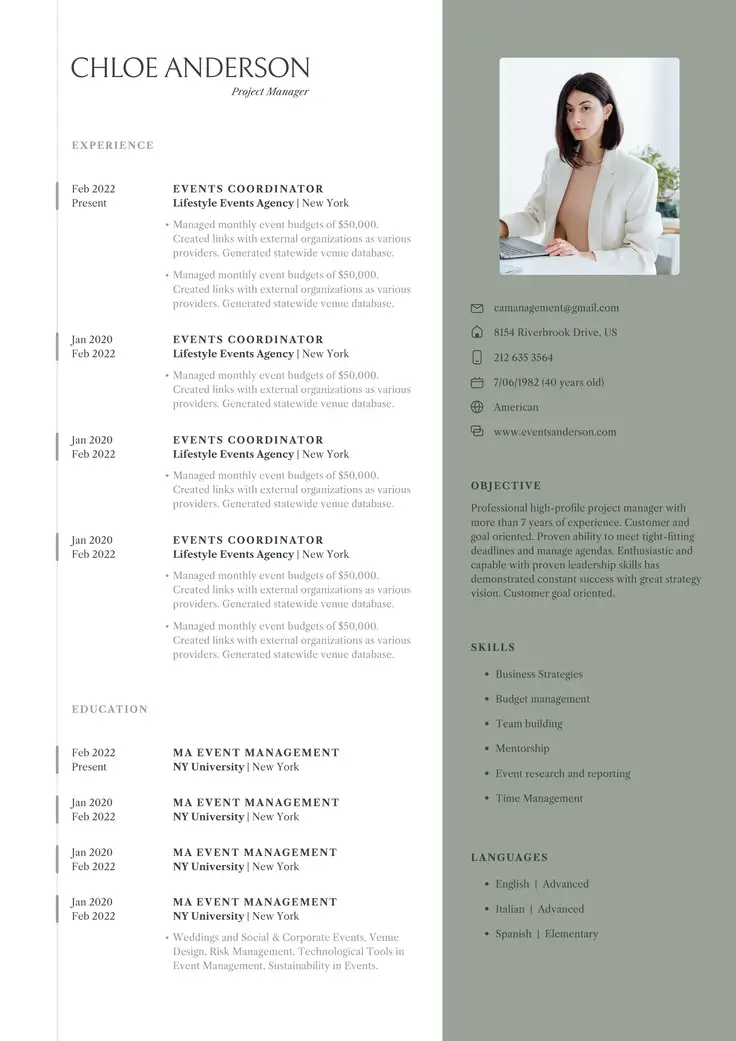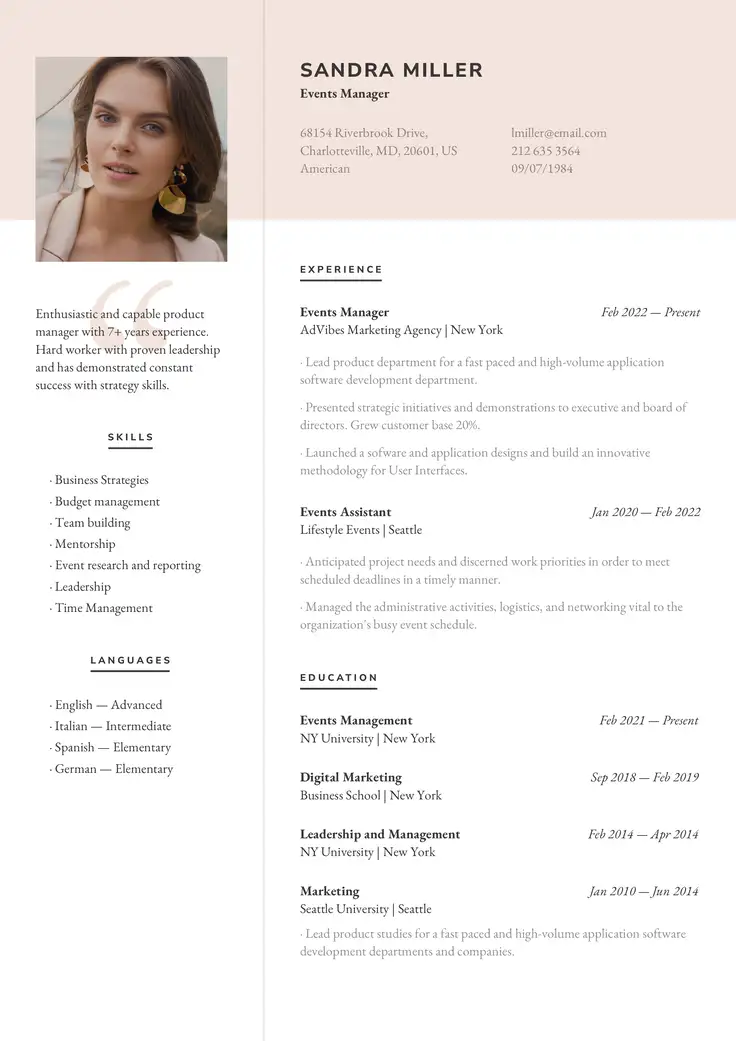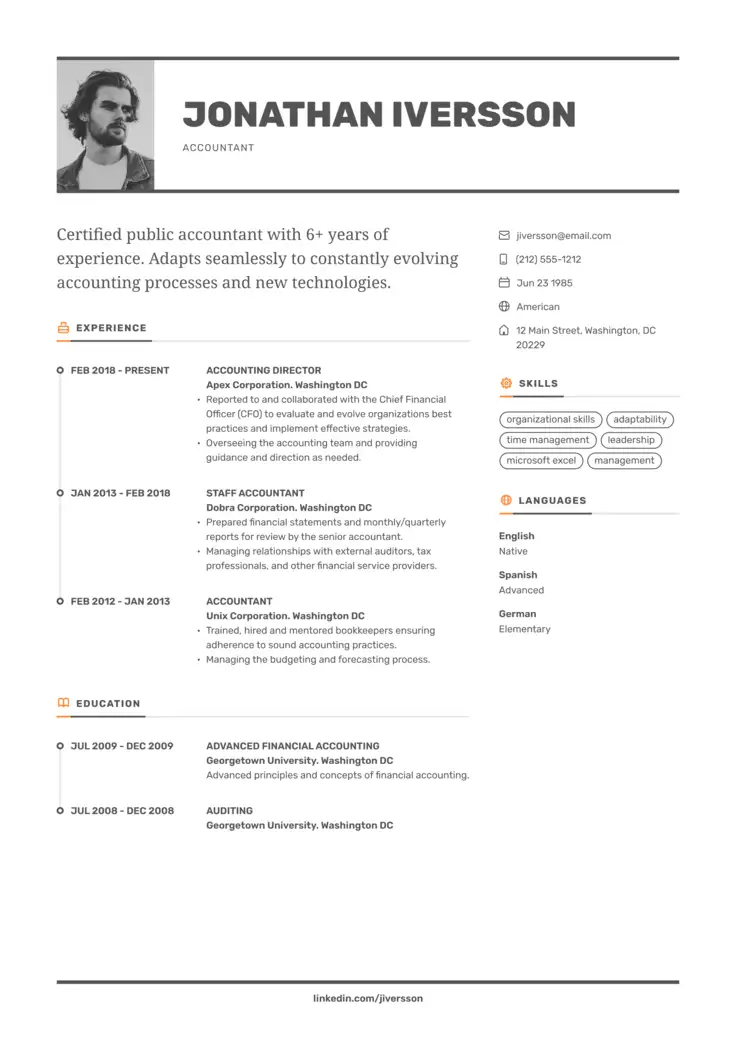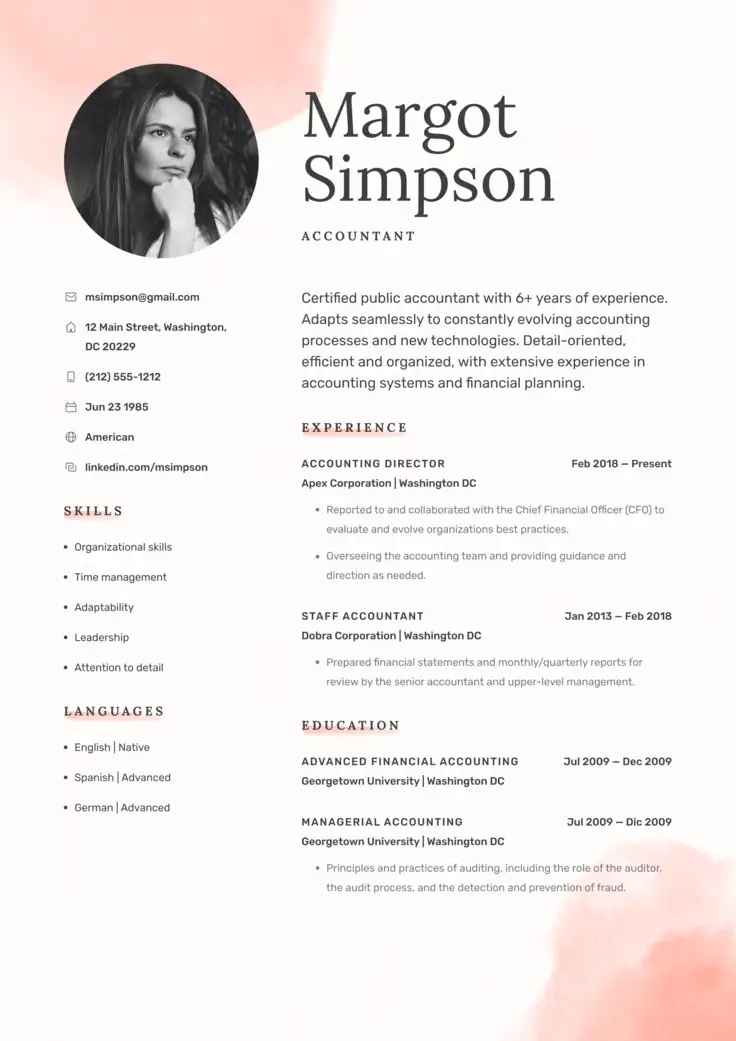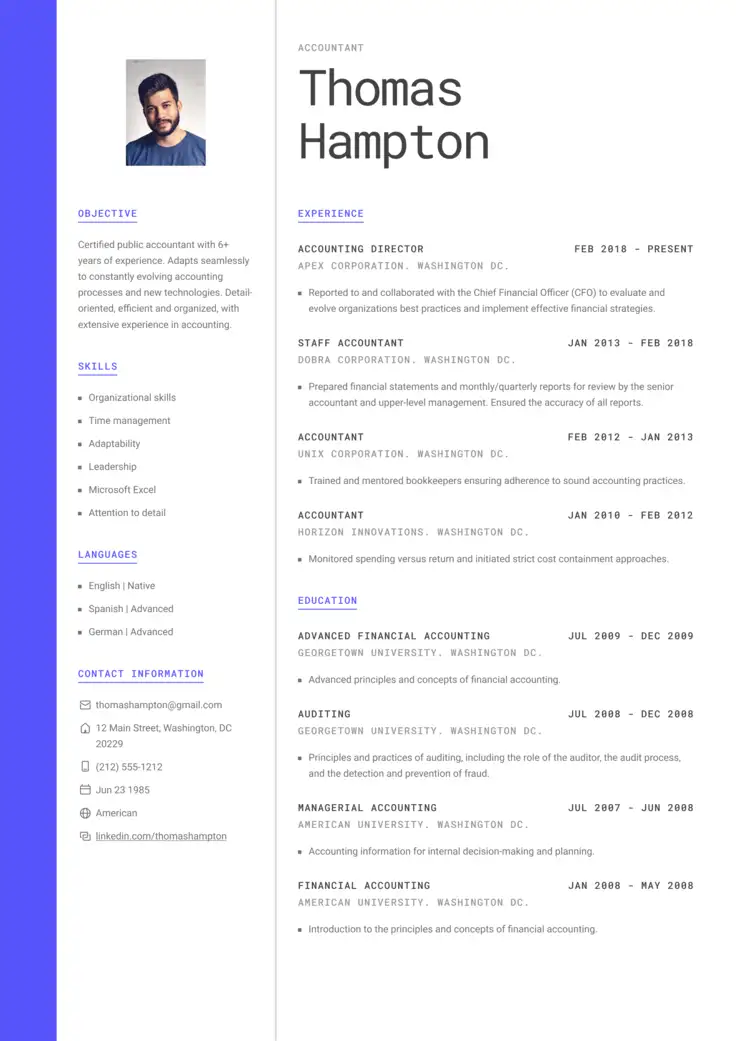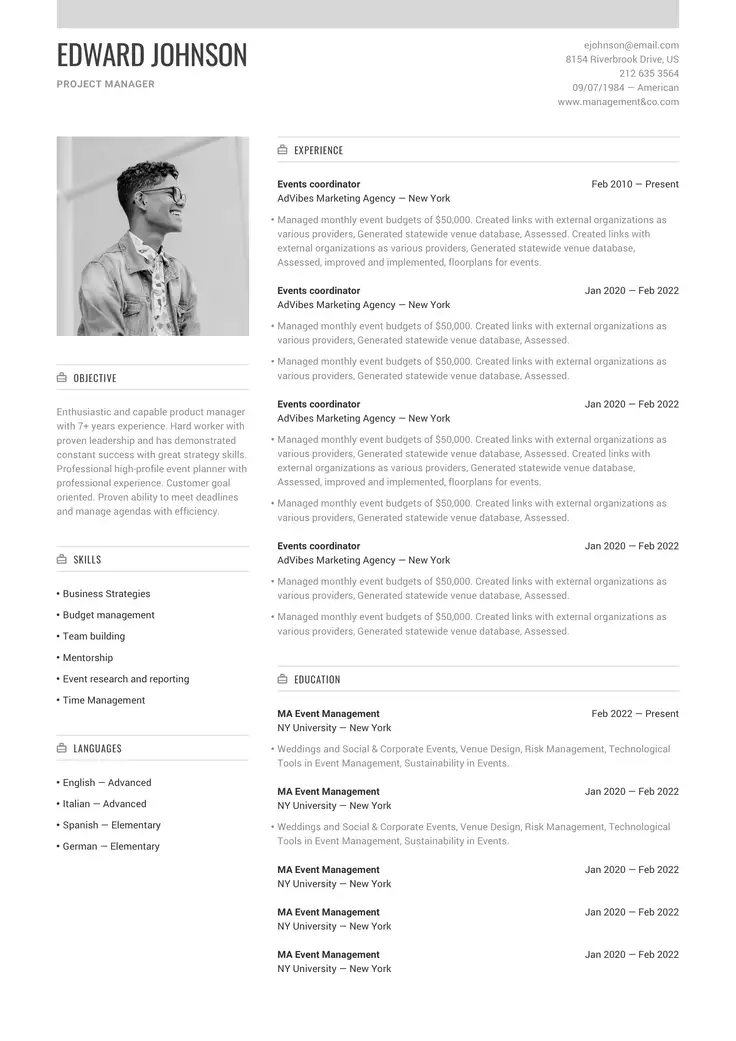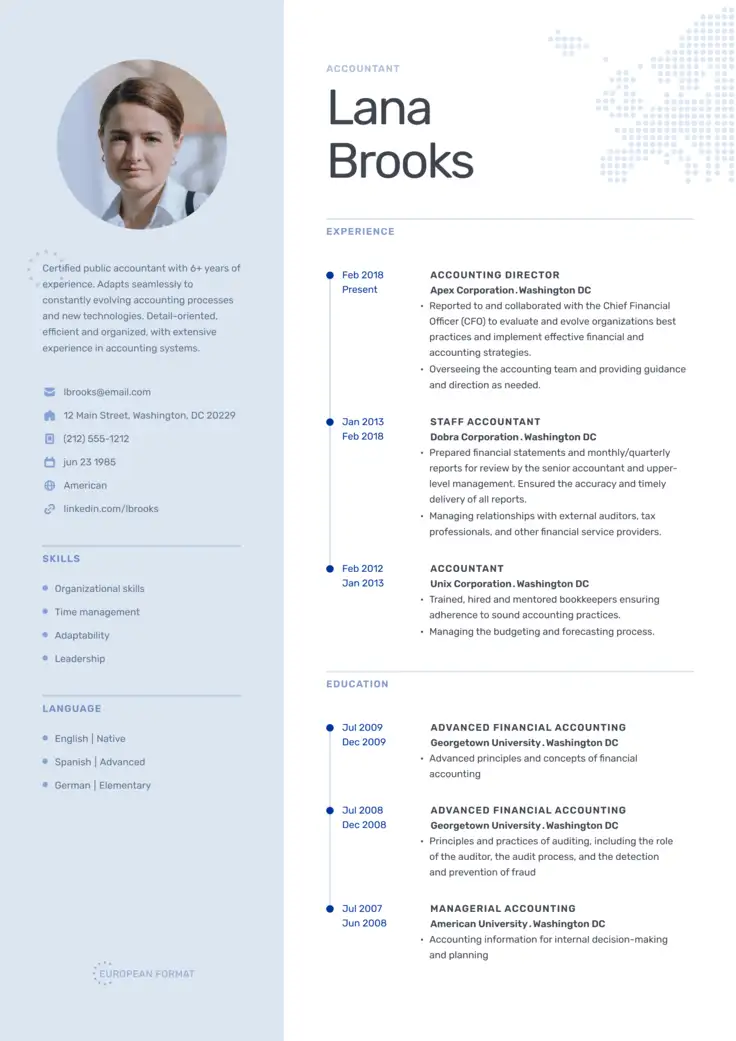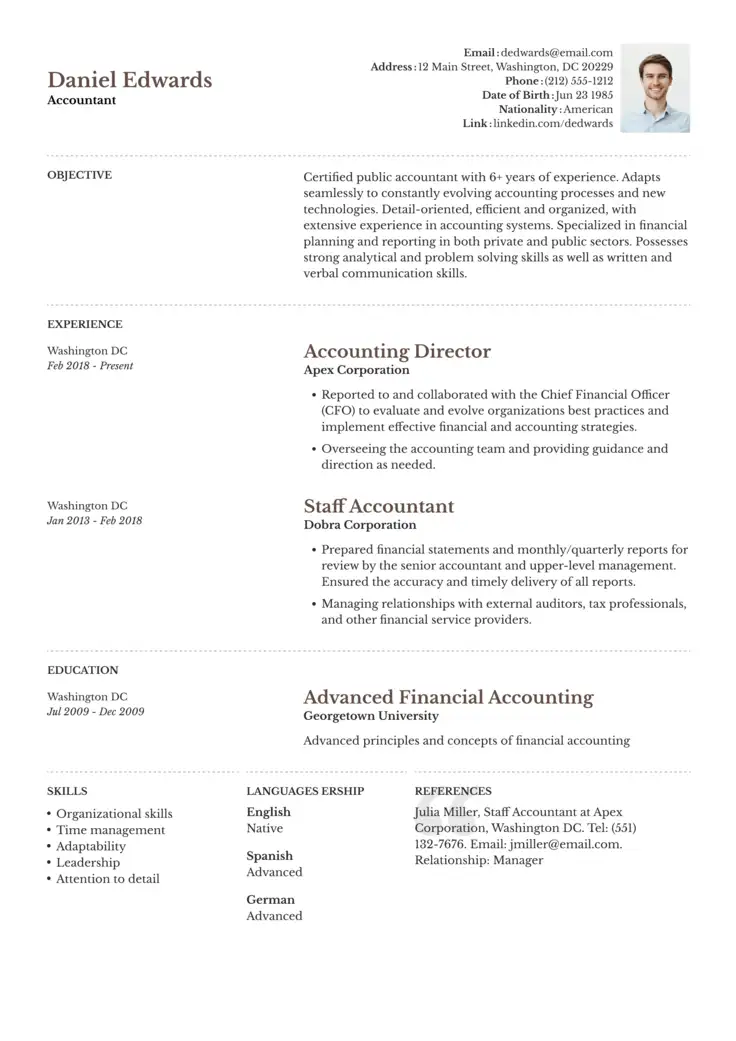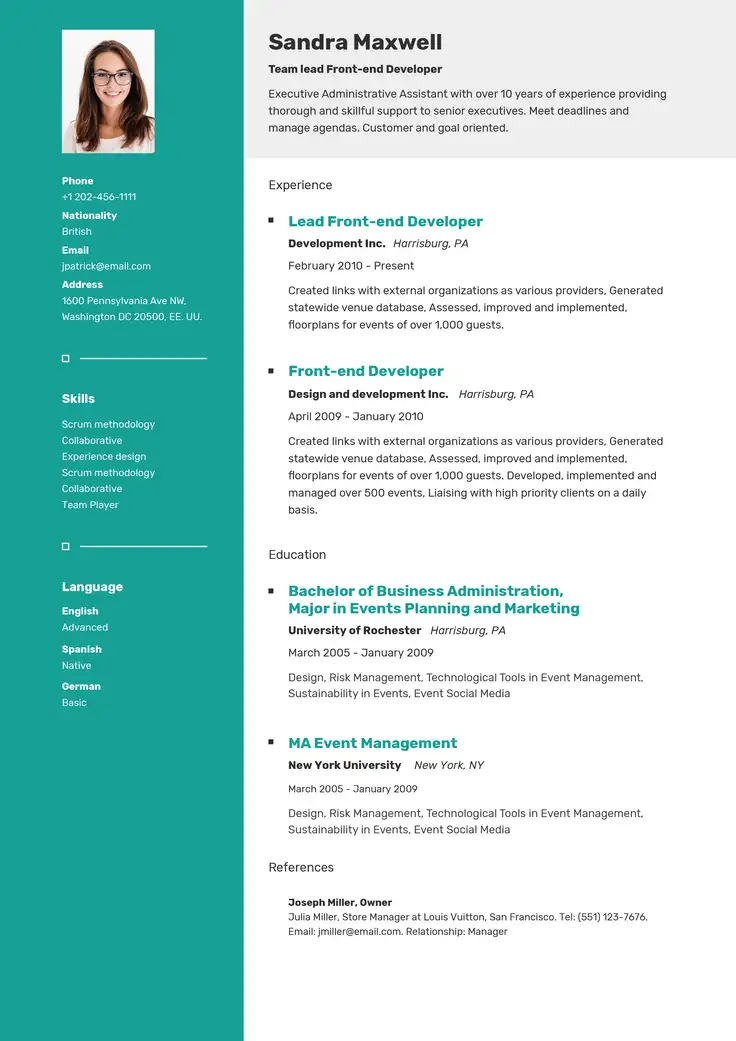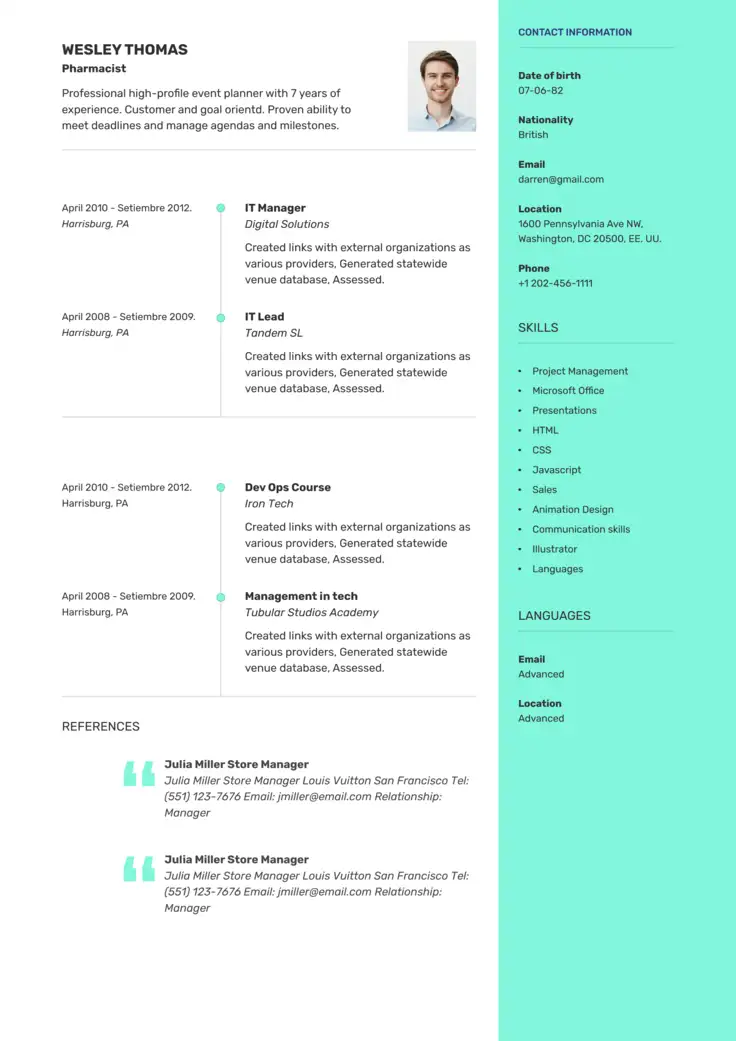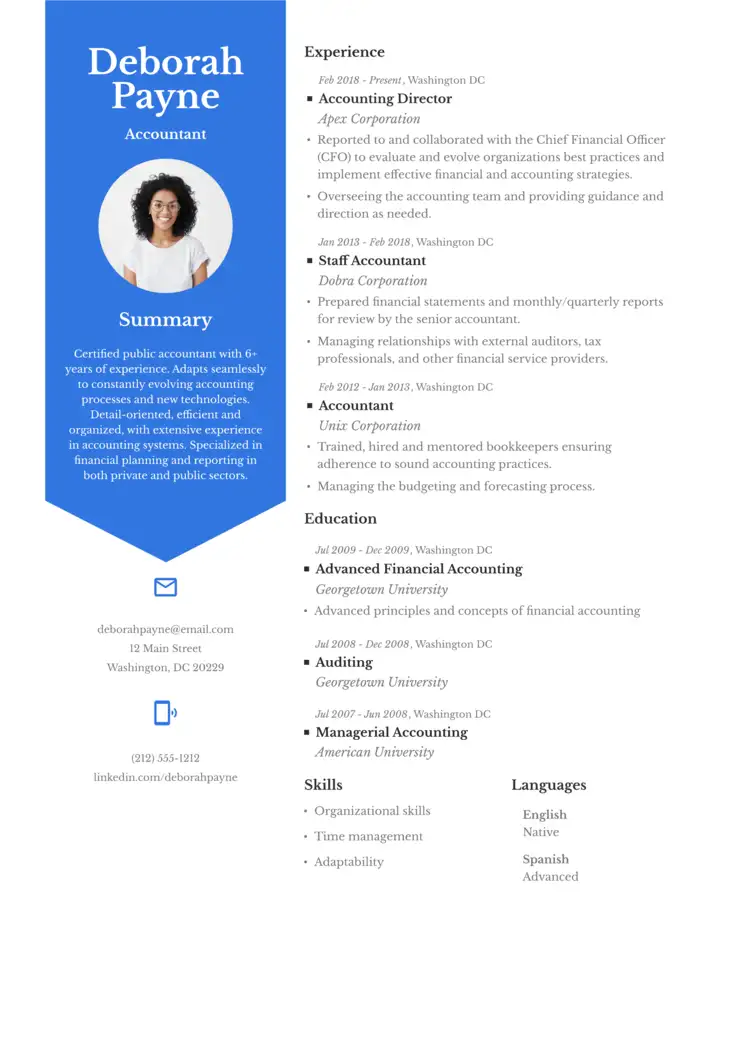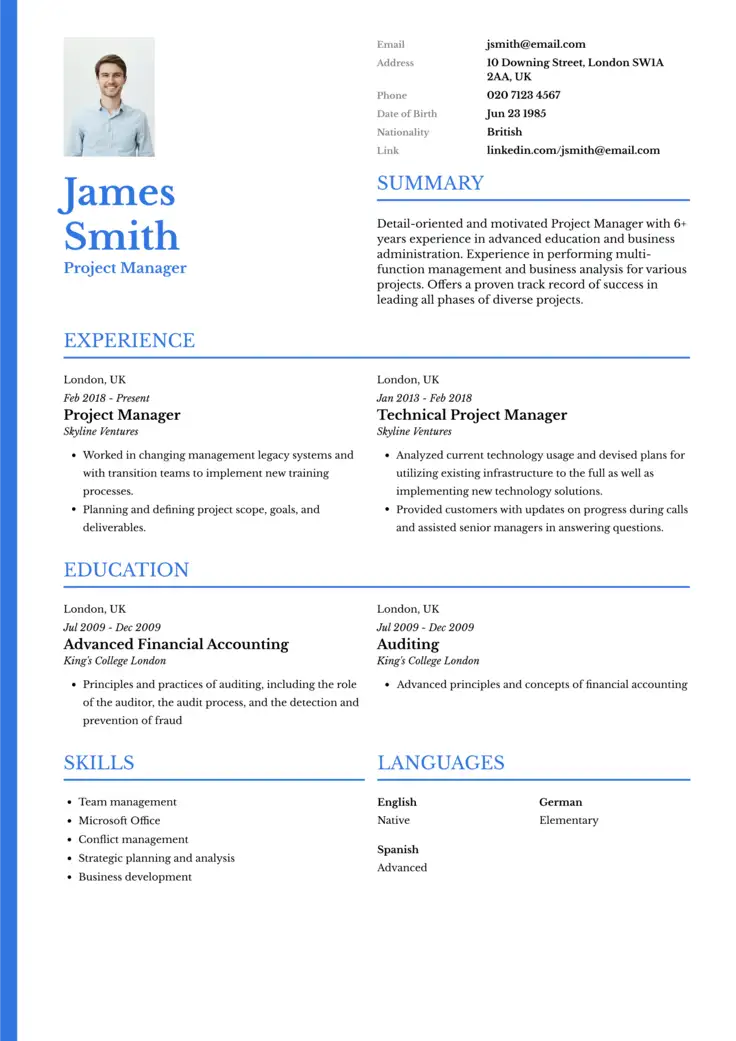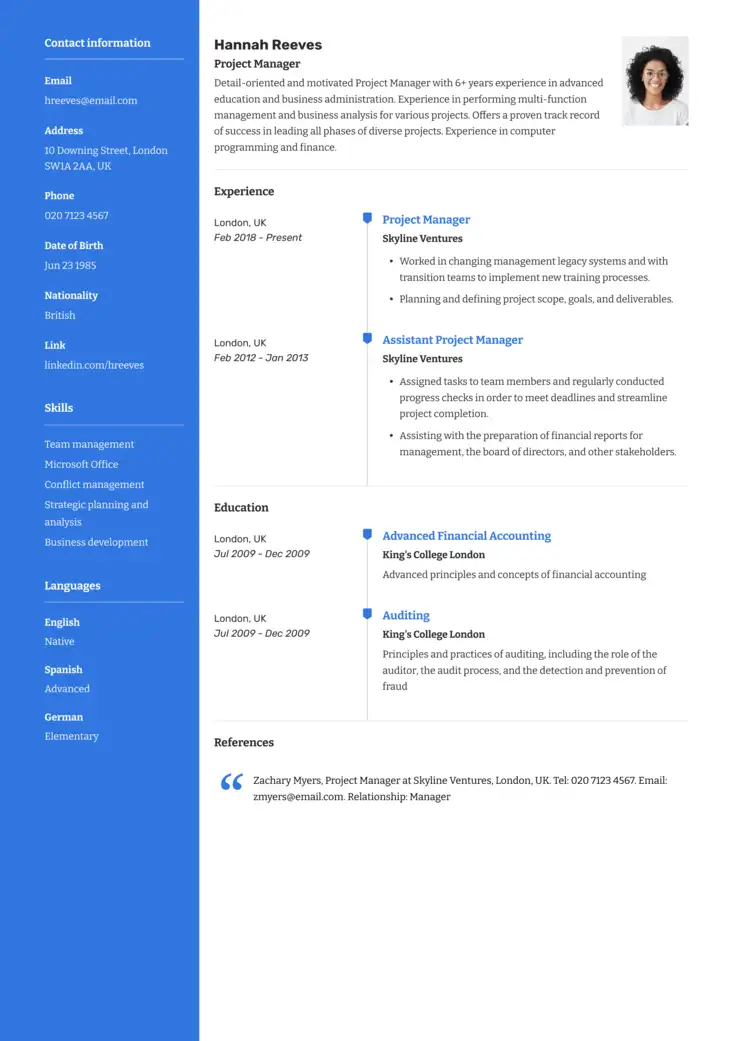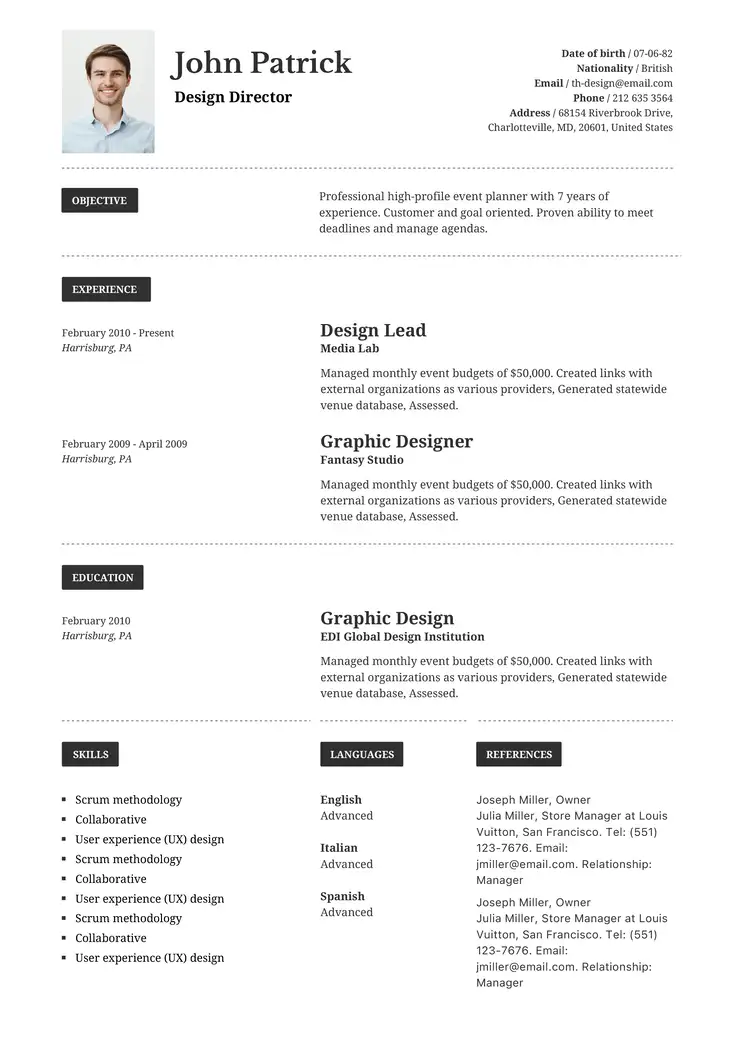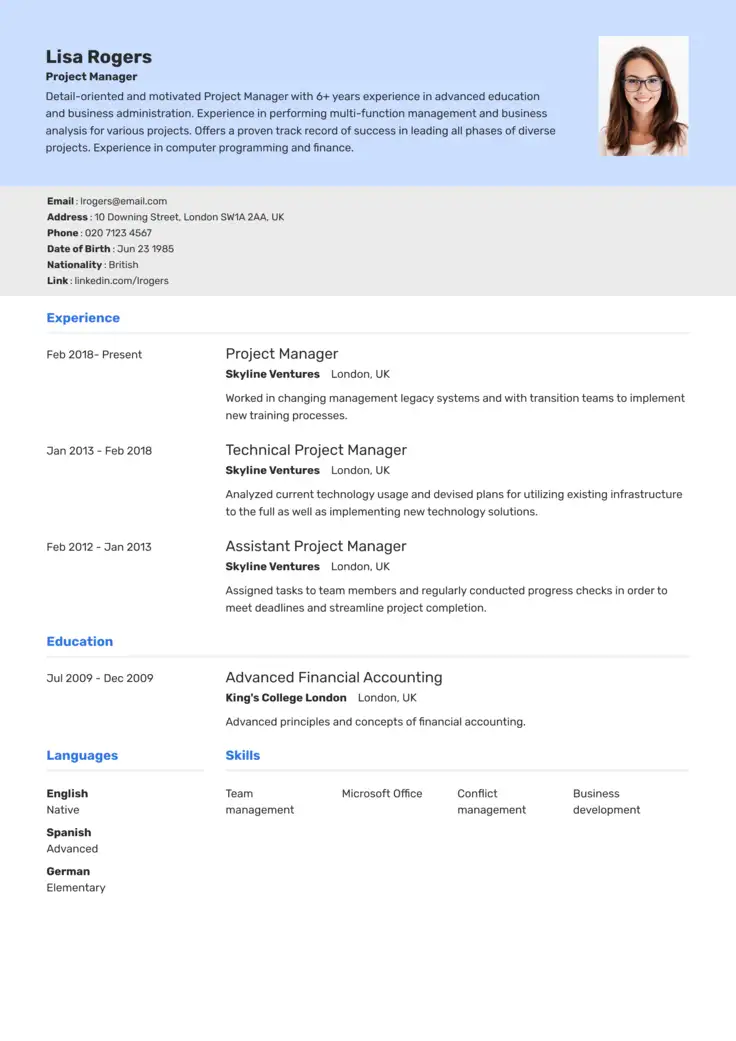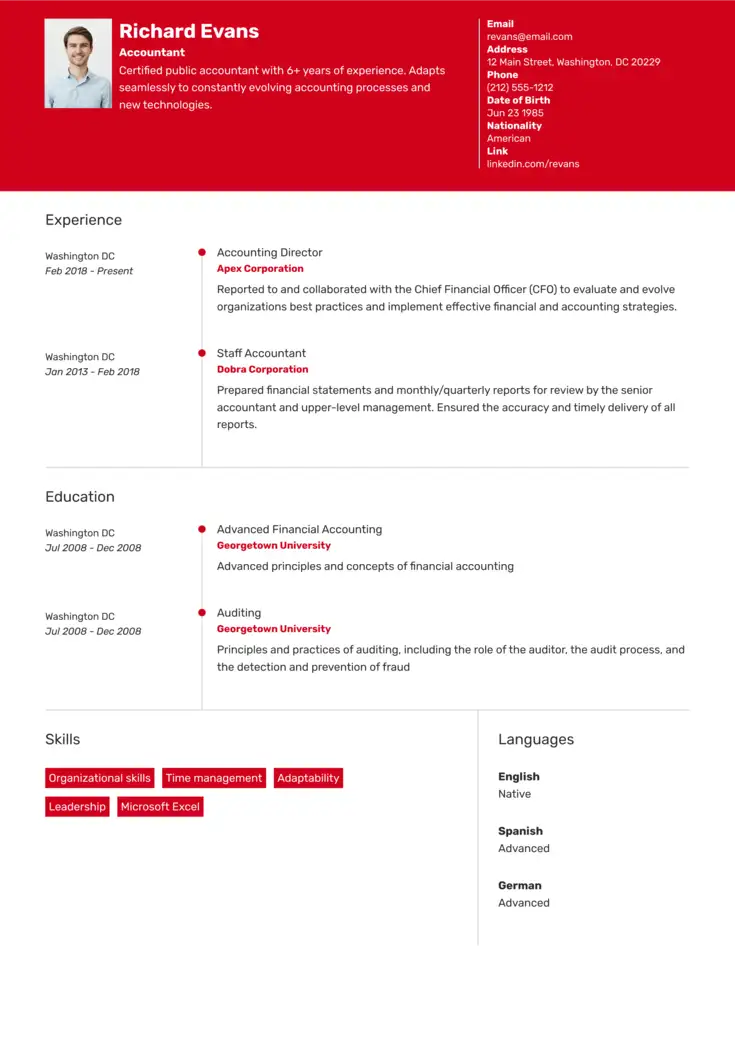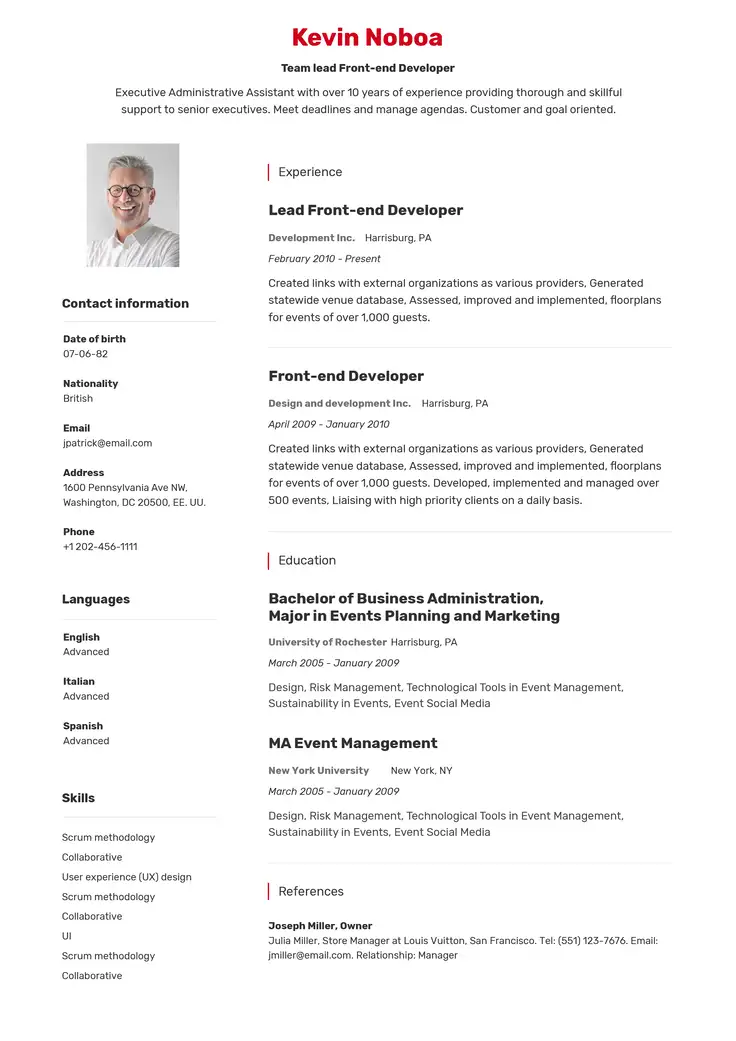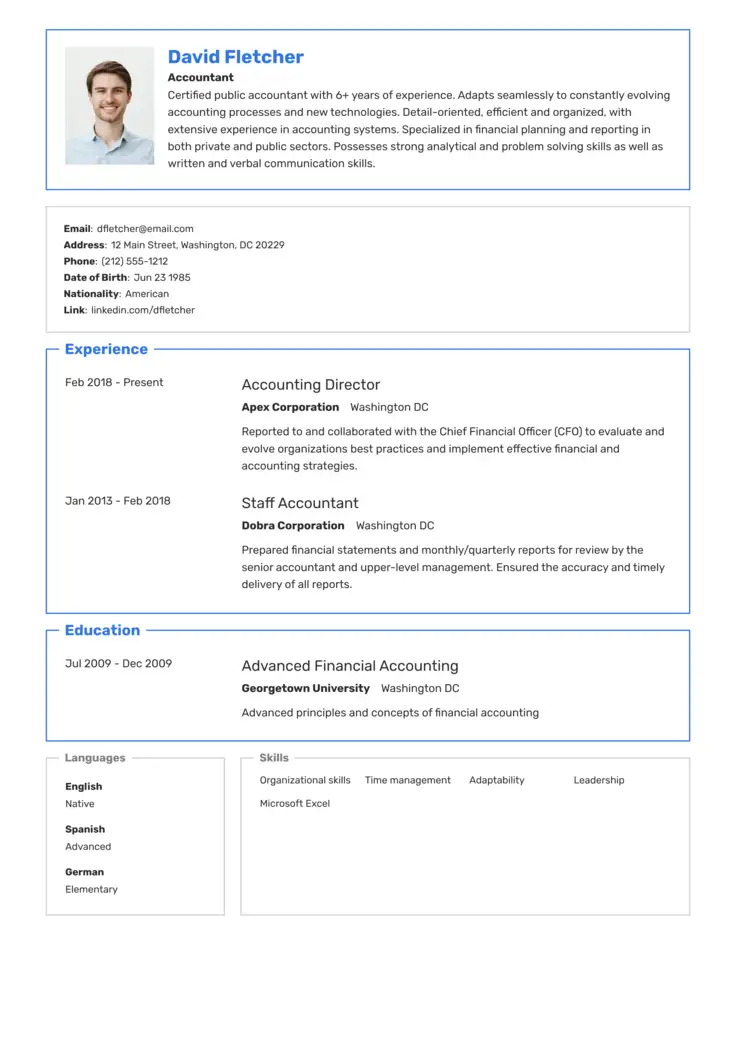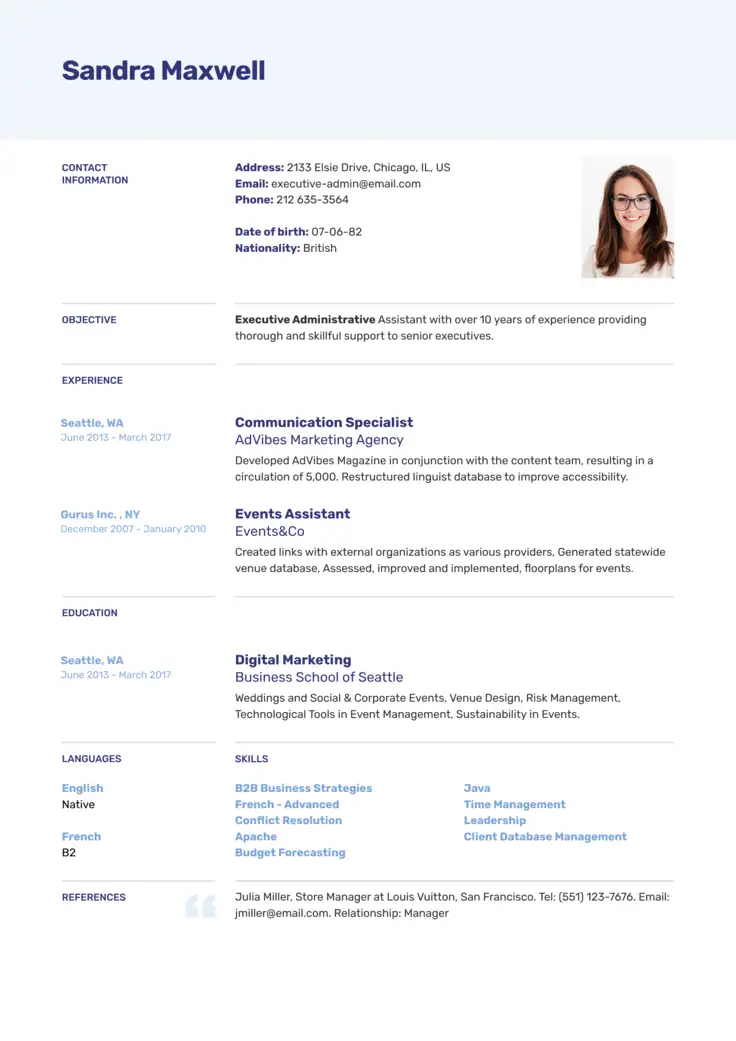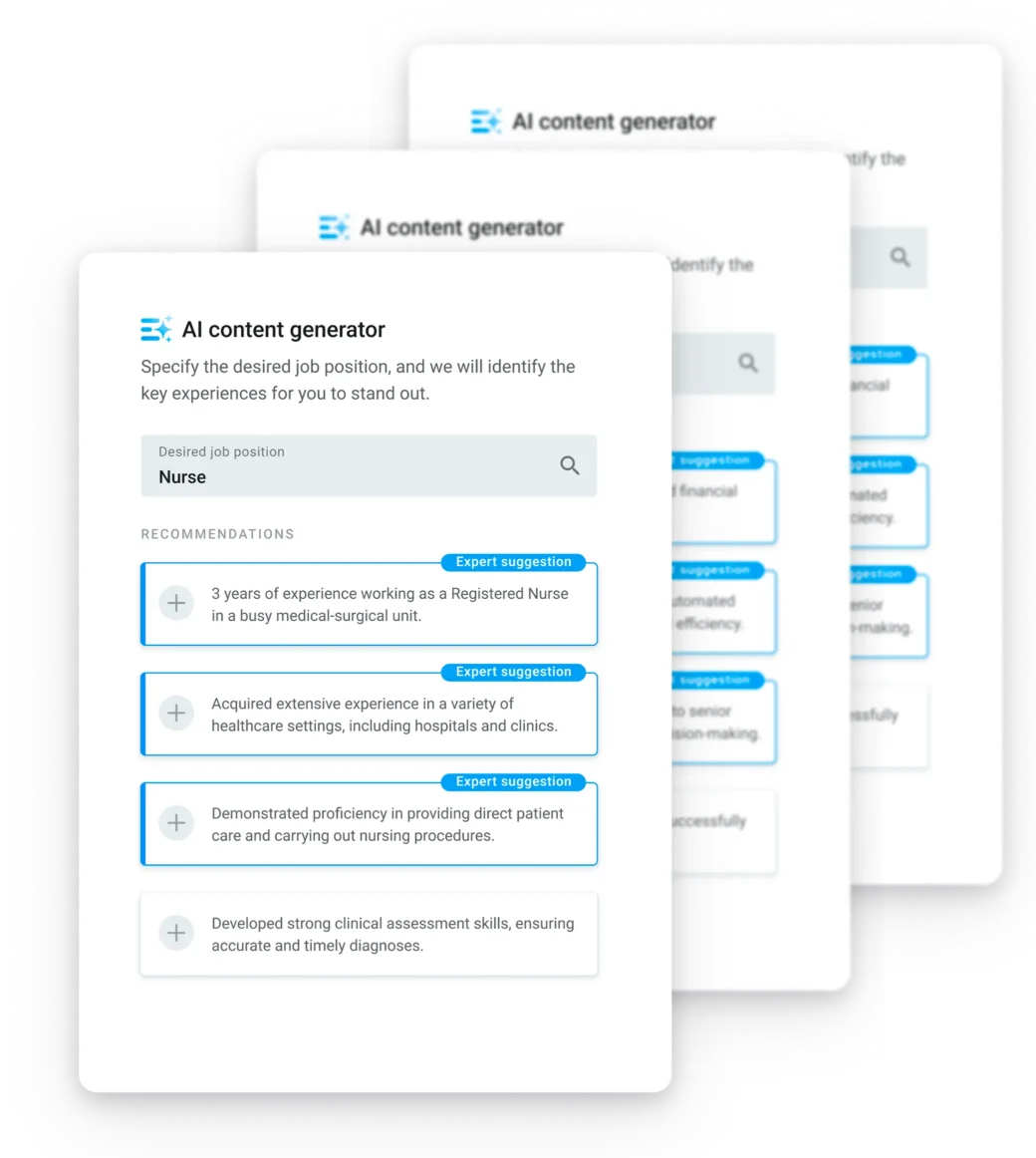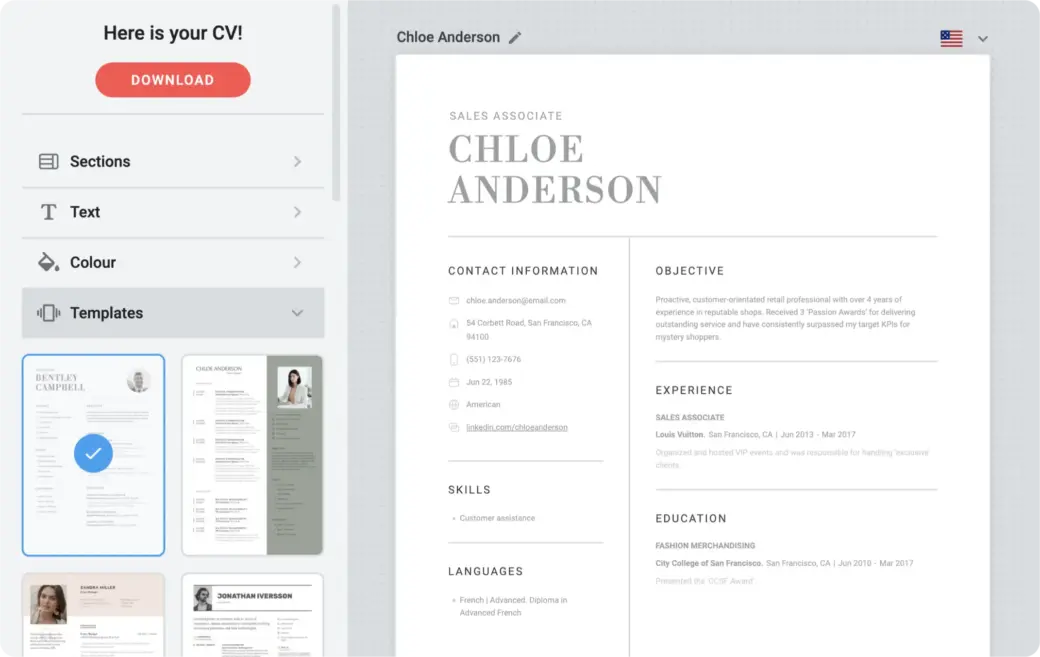Craft your ideal resume with our intuitive editor
Increase the possibility of getting the job you want with our professional resume templates
- What Kind of Publications Can You Include in Your Resume?
- Key Elements to Consider when Adding Publications to Your Resume
- How to list publications on a resume
- Where to Put Publications on Your Resume
- How to List Publications on a CV
- Publication Format Examples
- Dive Into Expert Guides to Enhance your Resume
Listing publications on your resume can give you the competitive edge you need in the job market. Publications demonstrate your expertise and commitment to your field to potential employers.
By including them, you not only highlight your experience but also showcase your ability to conduct research, contribute to the advancement of knowledge, and communicate your findings effectively.
For professionals in academia, publications are especially crucial, as they exemplify your scholarly achievements and research impact.
In this article, you’ll learn:
- The different kinds of publications you should include in your resume
- How to list publications on your resume for impact
- What elements to consider when listing publications
Let’s get started!
What Kind of Publications Can You Include in Your Resume?
You can feature different types of publications on your resume, ranging from those with a broad readership, such as blog posts, to more specialized pieces, such as academic or scientific publications:
- Press publications or citations
- Blogs
- Books and e-books
- Industry journal publications
- Trade association magazines
- Science articles
- Research publications
- Other academic publications
While blogs can be a valuable asset, you should carefully evaluate if your blog content is relevant to the position you’re applying for. It’s also equally important to ensure you don’t include any content that contains errors or incorrect information.
💡Tip
Any publications cited on a resume should always be relevant and accurate.
A curious hiring manager is very likely to examine the publications you listed on your resume. Recruiters typically pay attention to your writing style, the topics you address, and the strength of the arguments you present to better assess your suitability for the role.
Use our step-by-step online resume builder for additional tips and guidance. Craft a powerful resume that includes your publications and gets you the job you’re looking for.

Key Elements to Consider when Adding Publications to Your Resume
When it comes to listing publications on your resume, it’s important to consider the industry and the job you are applying for.
Typically, professionals in academia, public relations, and marketing include publications in their resumes. However, these are particularly important for scientists too.
To make a strong impact, ensure you take the following elements into consideration:
- Relevance: Prioritize the publications that are most relevant to the position you are applying for. This could include research papers, articles, or books that demonstrate your expertise in the field.
- Chronological order: List your publications in reverse chronological order, with the most recent ones first. This allows employers to see your most recent work and track the progression of your career.
- Thorough citations: Include complete and accurate citations for each publication, including the title, authors, publication name, date, and any relevant page numbers. This helps prospective employers verify your work and provides them with additional context.
- Context: For each publication, briefly describe its significance or impact. Explain any awards or recognition it has received, and highlight how it relates to the job you are applying for. This will help employers understand the value and relevance of your work.
- Formatting: Maintain a consistent format for all your publications. Use the same citation style throughout and ensure that the formatting is clean and professional.
Remember, the goal is to display your expertise and demonstrate your ability to contribute to the company or organization. Organizing and presenting your publications effectively is essential to make a strong impression on prospective employers.
How to list publications on a resume
If you have printed work that you want to include, there are several ways of documenting publications on a resume to pick the curiosity of hiring managers.
Take a look:
Structure for Written Publications
- Author’s last name, author’s first and middle names or initials
Title of article/chapter + name of journal/magazine/website etc. - Year of publication
Publishers or issue number + volume number + (if applicable) page numbers
Remember to include the URL if the publication is online.
Structure for Presentations/Conferences
- Role e.g. presenter; panelist; keynote speaker.
- Title/topic discussed.
- Forum/conference name.
- Date and location.
Publication Categories on Your Resume
Categorizing your publications on your resume is an effective way to organize and present your resume in a clear and structured manner. Grouping your publications into specific categories helps you emphasize different aspects of your research and showcase your experience in various areas.
Find below several publication categories you should consider:
- Research papers: Shows your talent to conduct rigorous research and contribute to the academic community.
- Conferences: Features your ability to disseminate your findings and engage with peers in your field.
- Authored or co-authored books: Highlights your involvement in longer-form academic or professional publications.
- Journal articles and magazine features: Ideal to demonstrate your ability to communicate complex ideas to a broader audience.
- Technical reports and whitepapers: Showcases your capacity to effectively communicate technical information and expertise.
Remember to tailor these categories to align with the job application and the skills required for the position.
By categorizing your publications, you can provide prospective employers with a clear overview of your research and accomplishments in a way that is easy to navigate and understand.

Where to Put Publications on Your Resume
When it comes to including publications on your resume, there are a few options for placement depending on your preference and the structure of your resume:
- Create a separate publications section: If publications are a significant part of your academic or professional profile, it may be advantageous to create a separate section specifically for your publications. This allows you to place your research and accomplishments prominently. Add this section after your education or experience section, depending on its significance.
- Include publications within relevant sections: You can also integrate your publications within relevant sections of your resume. For example, if you have published research papers related to a particular job application, include those publications within the relevant education or experience section.
- Placement within education section: To highlight your research and academic achievements, include these under the corresponding degree or program within the education section.
- Placement within experience section: If your publications are closely tied to specific professional experiences, you can include them within the corresponding work experience entry. Recruiters will be impressed by your ability to apply your research and contribute to your field in a practical setting.
When deciding whether to create a separate section or integrate publications within other resume sections, consider the significance of your publications to the position you are applying for.
If your publications are highly relevant and demonstrate your expertise in the field, a separate section can help make a strong impact.
However, if your publications are not the primary focus or if they are closely tied to specific experiences or educational achievements, integrating them within the relevant sections can be very effective without cluttering your resume.
Ultimately, the goal is to make your publications easily accessible and highlight their relevance to potential employers. Think about the overall structure and flow of your resume to determine the most suitable placement option for your publications.
Unpublished Works
Including unpublished works on your resume requires careful consideration to accurately represent your ongoing research and achievements.
Here are some tips to present your unpublished works effectively:
- “In Press” status: If you have works that are currently in the process of being published but are not yet available, list them as “in press” on your resume. Include as much information as possible, such as author names, the type of publication, name of the publication, and any known issue or volume numbers.
- Avoid unapproved publications: Under no circumstances should you include publications on your resume that have not been approved or accepted for publishing. Only include works that have gone through the necessary review and acceptance process, as this reflects your credibility and ensures you are not misleading potential employers.
You can accurately represent your unpublished works and maintain professional integrity on your resume by adhering to these guidelines.
It is crucial to provide comprehensive and accurate information about the status of your works, enabling employers to assess your potential contributions to their organization.
If you’re still unsure as to whether you should include publications on a resume, it may be useful to review the different resume templates to see if a publications section is ideal in your career situation.
How to List Publications on a CV
Academic positions often require a thorough evaluation of an applicant’s research experience and scholarly activities. Hiring committees and academic institutions need to assess an individual’s track record of research, publications, and contributions to their field.
A CV allows applicants to present a detailed overview of their academic accomplishments, such as the publication of research articles in peer-reviewed journals, conference presentations, and other research-related activities.
Establish a separate section on your CV specifically for your publications. Place this section after your experience and education sections and choose only one citation style.
Below are examples of publication citations in different styles:
- APA Style:
Smith, J., & Johnson, A. (2022). The Importance of Teamwork in Project Management. Journal of Project Management, 15(3), 45-60.
- MLA Style:
Smith, John, and Amanda Johnson. “The Importance of Teamwork in Project Management.” Journal of Project Management 15.3 (2022): 45-60.
- Chicago Style:
Smith, John, and Amanda Johnson. “The Importance of Teamwork in Project Management.” Journal of Project Management 15, no. 3 (2022): 45-60.

Publication Format Examples
The examples in this section cover different categories, including keynote speaker appearances, written publications, and digital publications, providing you with a clear understanding of how to feature your publications.
Use these samples as a guide to highlight your research contributions and expertise effectively:
- Keynote Speaker Appearances:
Smith, J. (2022). “Emerging Trends in Artificial Intelligence.” Keynote Speech presented at the International Conference on Technology Innovation, New York, NY.
- Written Publications:
Author:
Johnson, A. (2021). “The Role of Leadership in Organizational Change.” Journal of Organizational Behavior, 15(2), 78-95.
Co-author:
Johnson, A., & Smith, J. (2023). “E-commerce in plastics manufacturing.” American Plastics Foundation Monthly. 312: 111-117
- Digital Publications:
Smith, J. (2020). “10 Tips for Effective Social Media Marketing.” Digital Marketing Magazine. Retrieved from https://www.digitalmarketingmagazine.com/article/10-tips-for-effective-social-media-marketing.
- Presentation:
UX Research and Design in Online and Distance Learning. The UX Conference. 2016. London.
By following these examples, you can effectively feature your publications on your resume.
Please note that the specific format and details included may vary depending on the style and conventions of your industry or the specific job you are applying for.
Adapt these examples to suit your needs and ensure they align with the requirements of the position you are targeting.
To simplify the process of including publications on a resume, try our online resume builder. It offers on-the-go tips and practical examples to guide you craft this less known resume section.
Dive Into Expert Guides to Enhance your Resume



